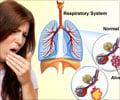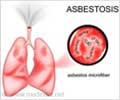Available data indicates that nearly 50,000 Americans are diagnosed each year with stage III or locally advanced NSCLC, for which surgery is usually not a viable treatment option

"The significant increase in five-year survival for patients receiving concurrent versus sequential treatment establishes a new treatment standard for this large population of lung cancer patients," says Walter J. Curran, Jr., M.D., RTOG Group Chair, the trial's principal investigator and Executive Director of the Winship Cancer Institute of Emory University in Atlanta. "It is likely the chemotherapy makes the tumor cells more sensitive to radiation therapy, which contributed to the improved long-term patient benefit seen with concurrent therapy," adds Curran.
A total of 610 study participants at 153 institutions across North America were enrolled into the phase III trial and were randomized to receive cisplatin-based chemotherapy in addition to radiation therapy administered sequentially (arm 1), once daily concurrently (arm 2) or twice daily concurrently (arm 3). The percentages of study participants confirmed still living at five years post-treatment in study arms 1, 2 and 3 were 10 percent, 16 percent and 13 percent, respectively. "The significant survival benefit of concurrent treatment confirms the promising results observed in a similar RTOG phase II trial and corroborates the results of a 314-patient Japanese trial and several smaller European trials," says Jeffrey D. Bradley, M.D., Director of the S. Lee Kling Center for Proton Therapy at the Siteman Cancer Center, Washington University School of Medicine in St Louis and RTOG Lung Cancer Committee Chair. "The survival gain related to concurrent treatment was most prominent in arm 2 for which the only difference in treatment compared with arm 1 was the timing of the radiation therapy delivery."
The authors also report that study participants experienced significantly worse side effects with concurrent therapy versus sequential therapy, particularly, severe esophagitis (inflammation of the esophagus lining). However, data collected from study participants, who were followed for a median of 11 years after treatment show that late side effects occurring months or years after treatment were minimal and similar across the three study arms.
Medical oncologist Corey J. Langer, M.D, Director of Thoracic Oncology at the Abramson Cancer Center, University of Pennsylvania in Philadelphia and research co-author states, "Many patients initially diagnosed with inoperable stage III disease are too ill to tolerate the more aggressive concurrent therapy administered in this trial. We are encouraged, however, that new radiation therapy techniques and chemotherapy drugs developed since the trial's conduct—some currently under investigation—have the potential to increase the benefit of concurrent therapy. It is critical for RTOG and other groups to continue their investigation of new treatments to improve cancer survival and minimize treatment side effects."
Advertisement














